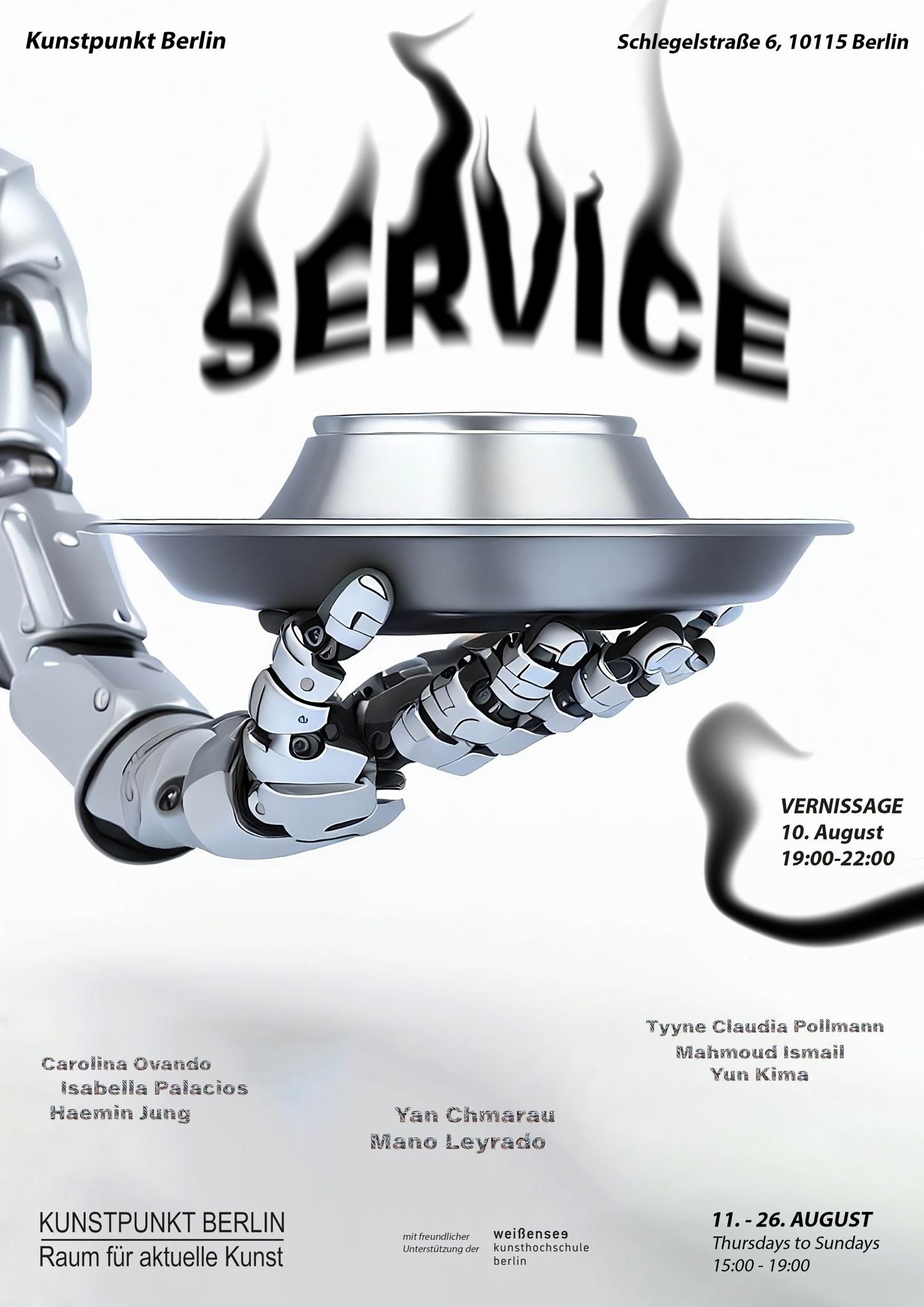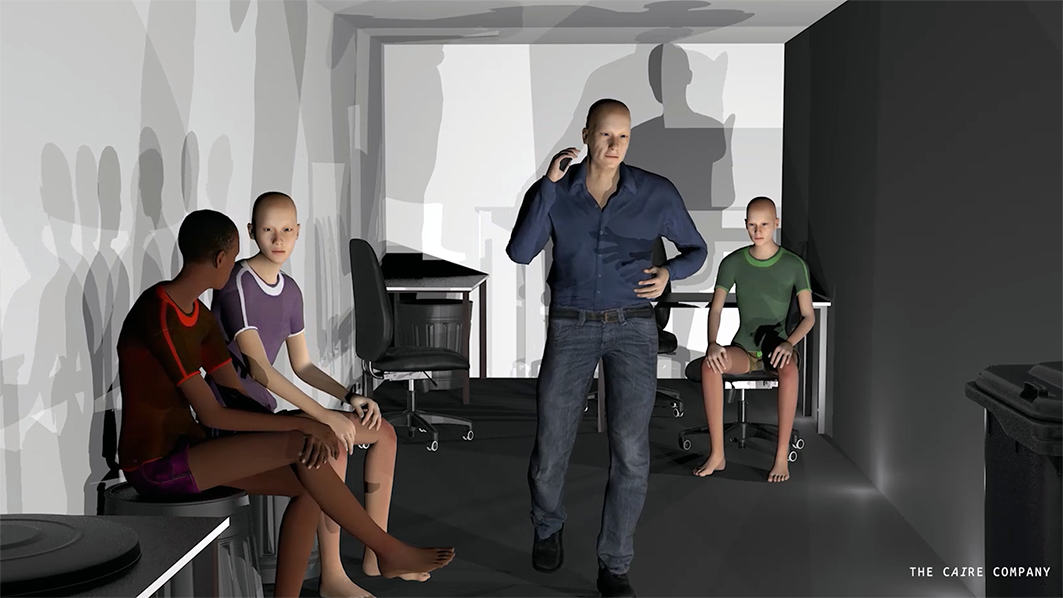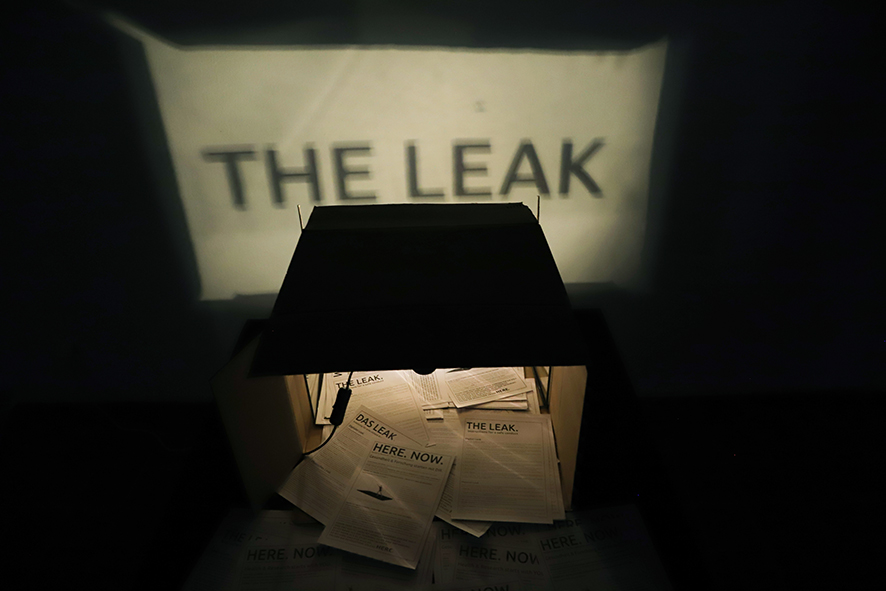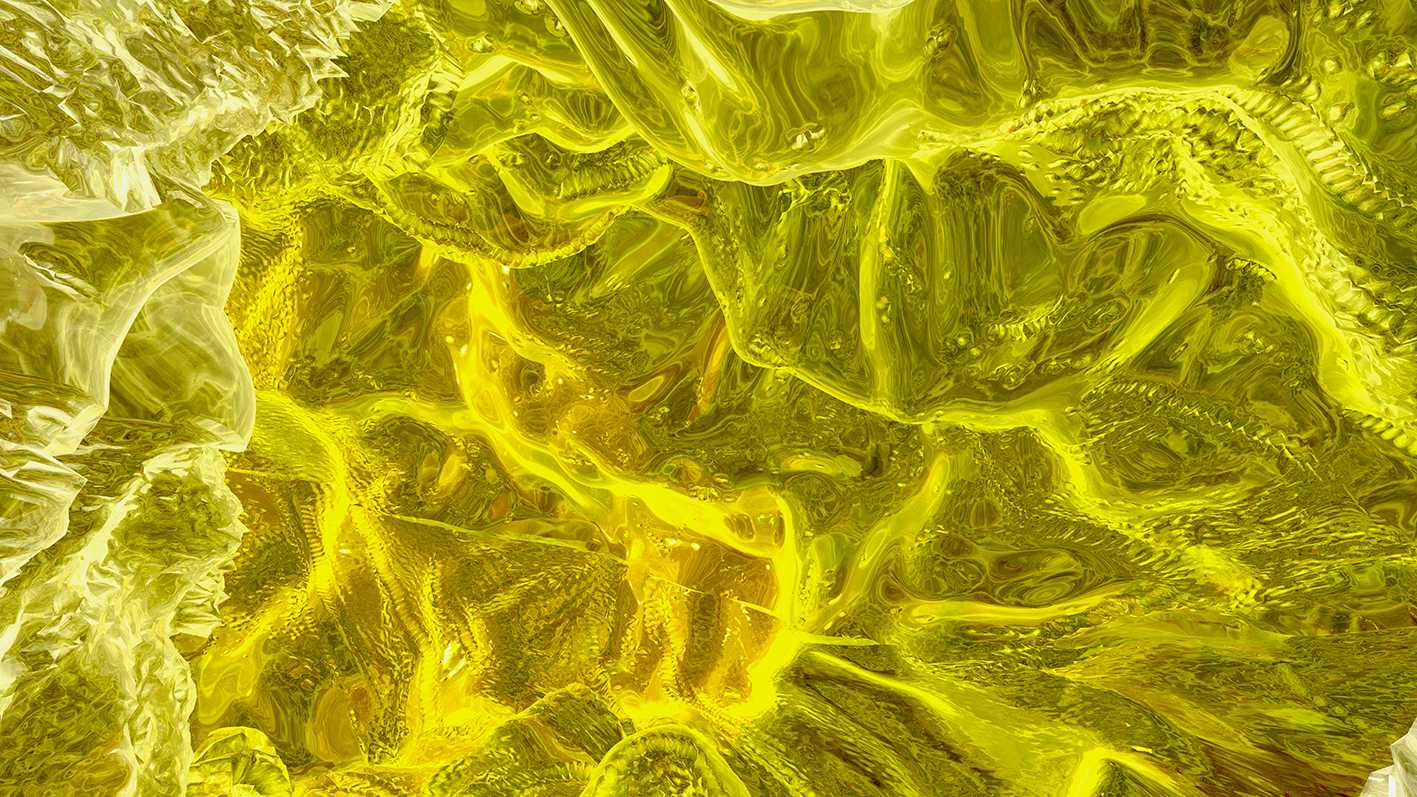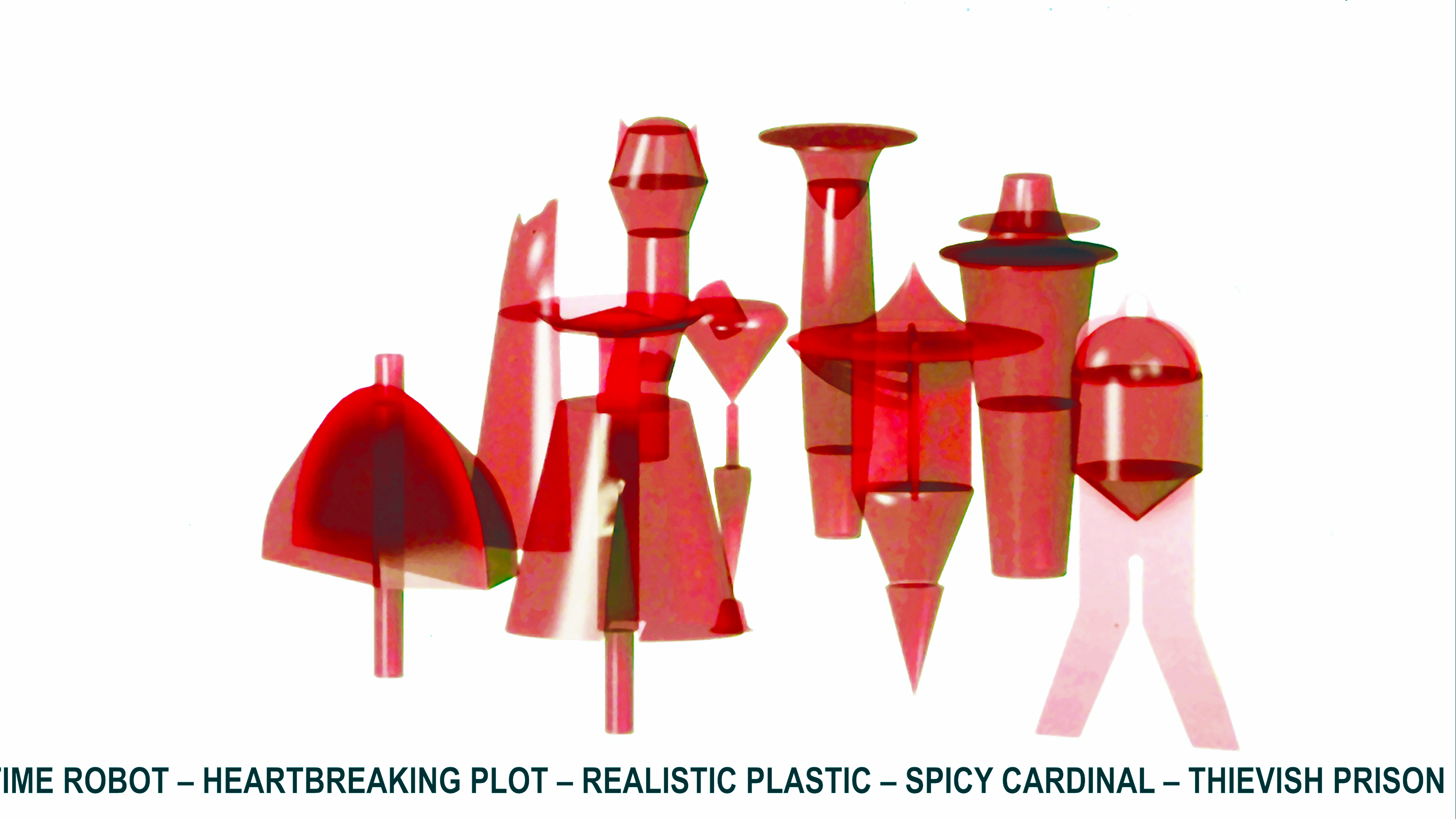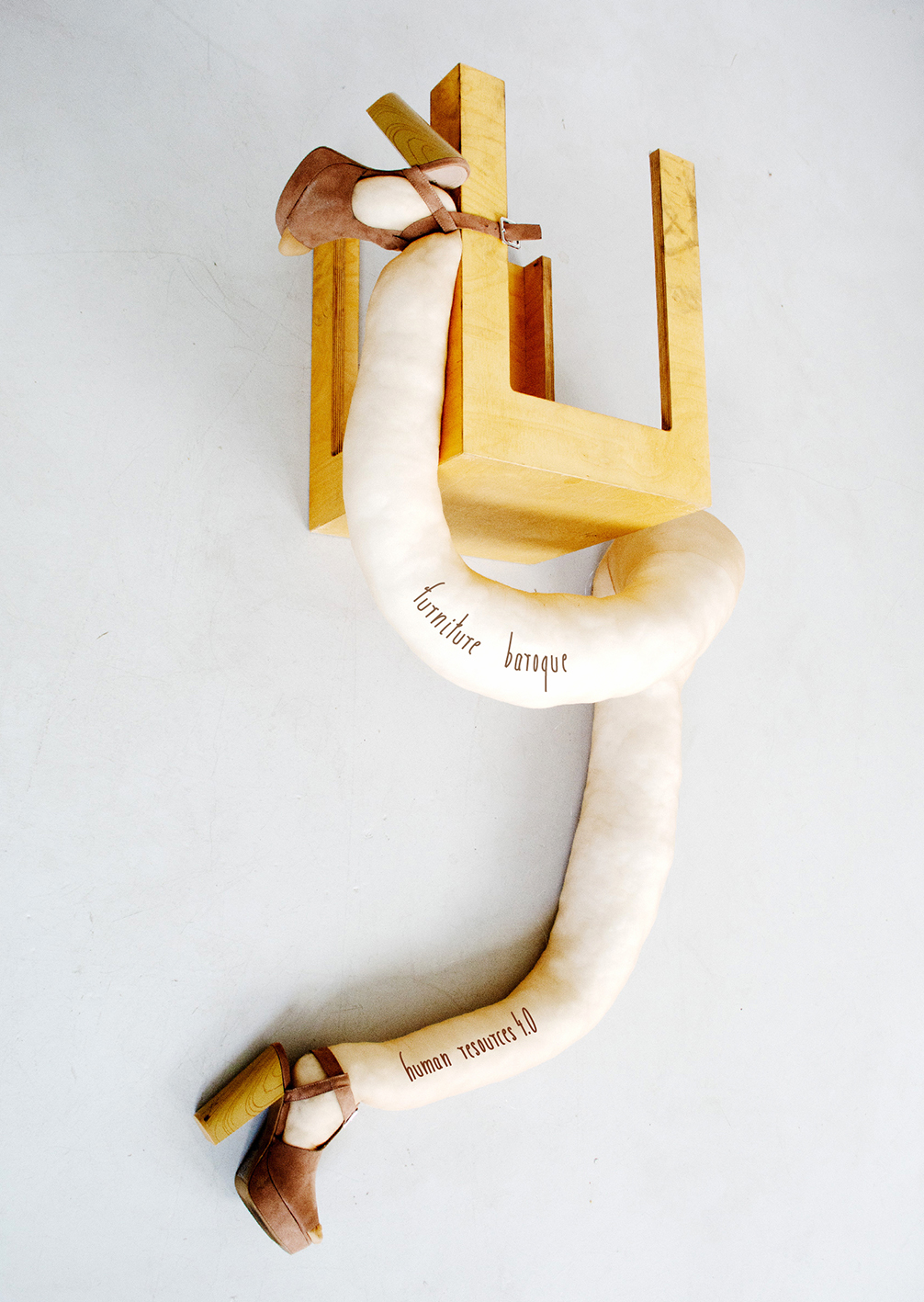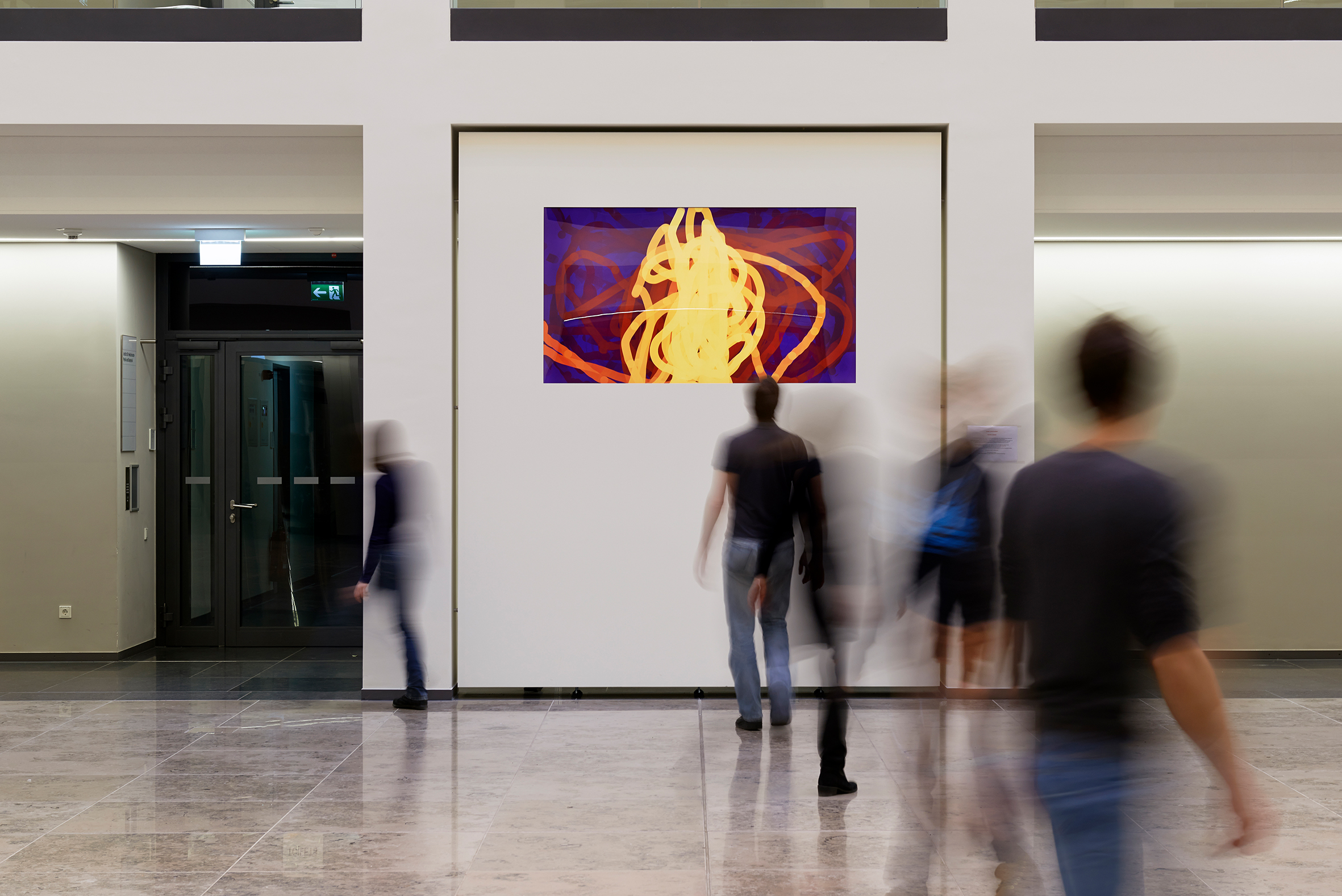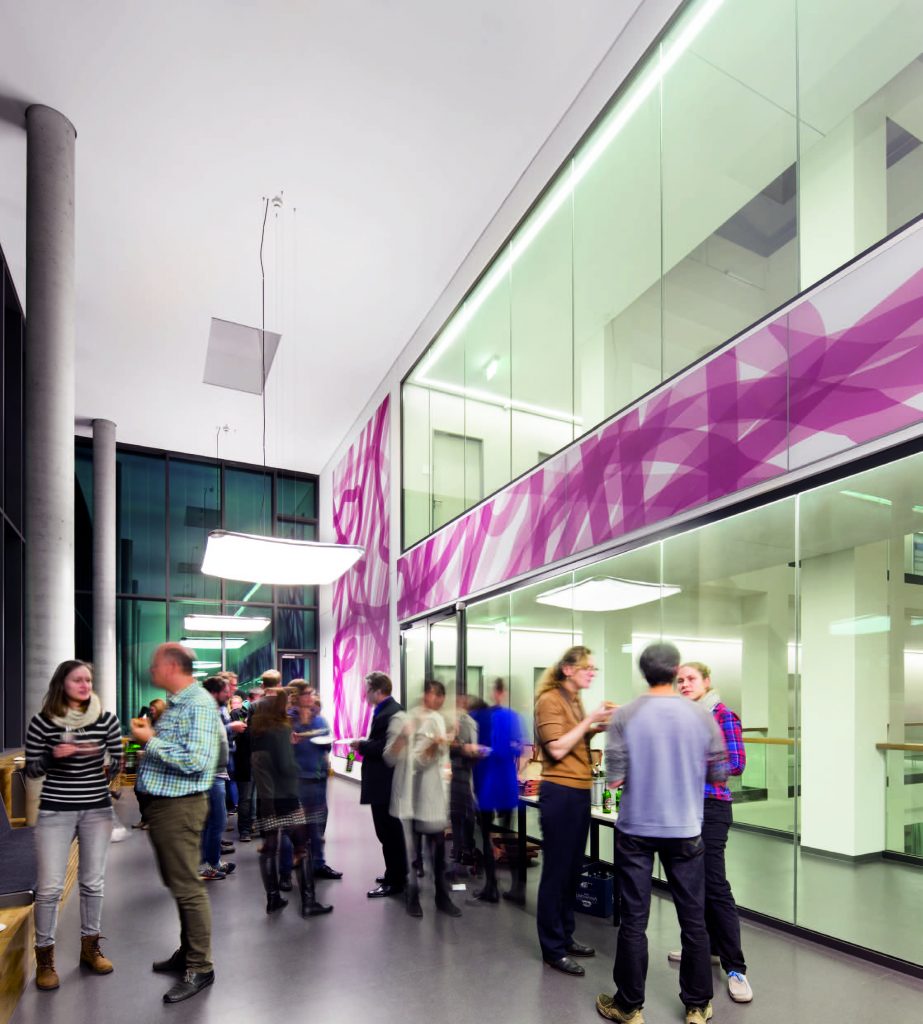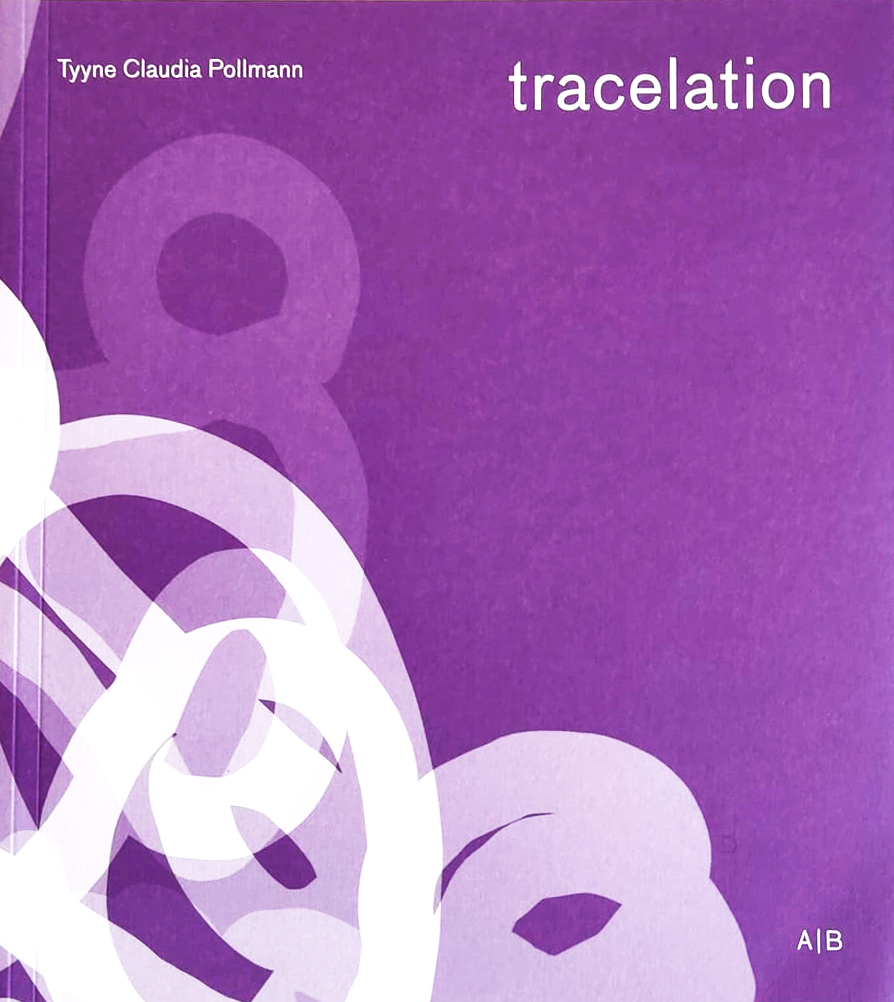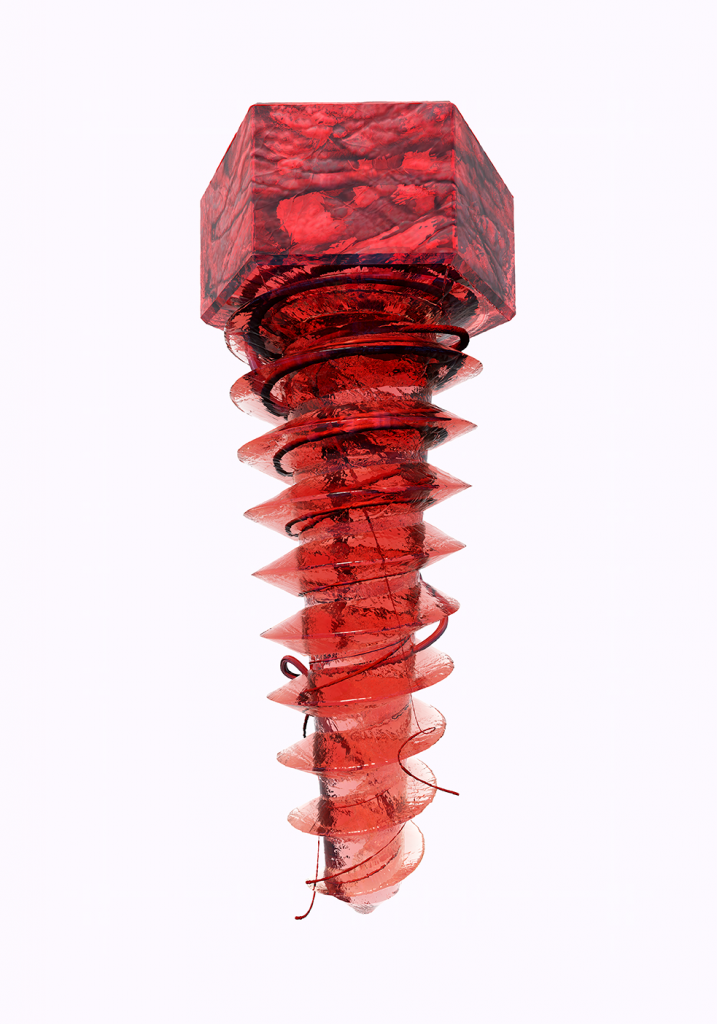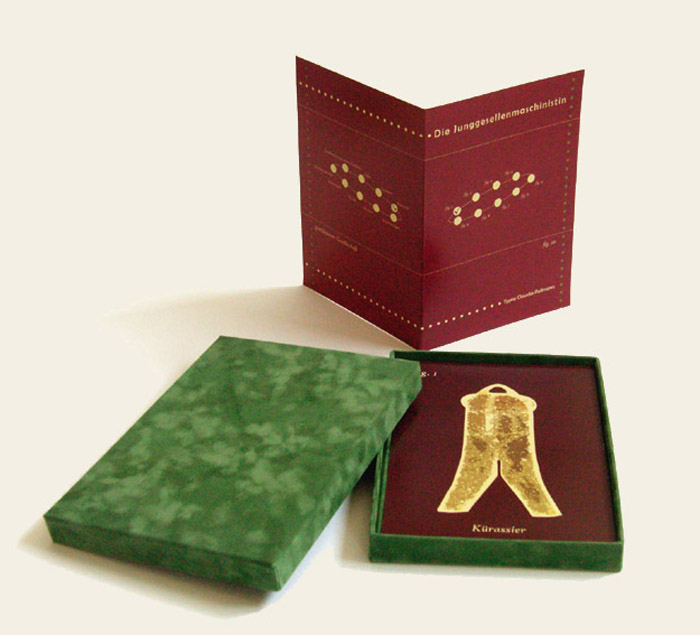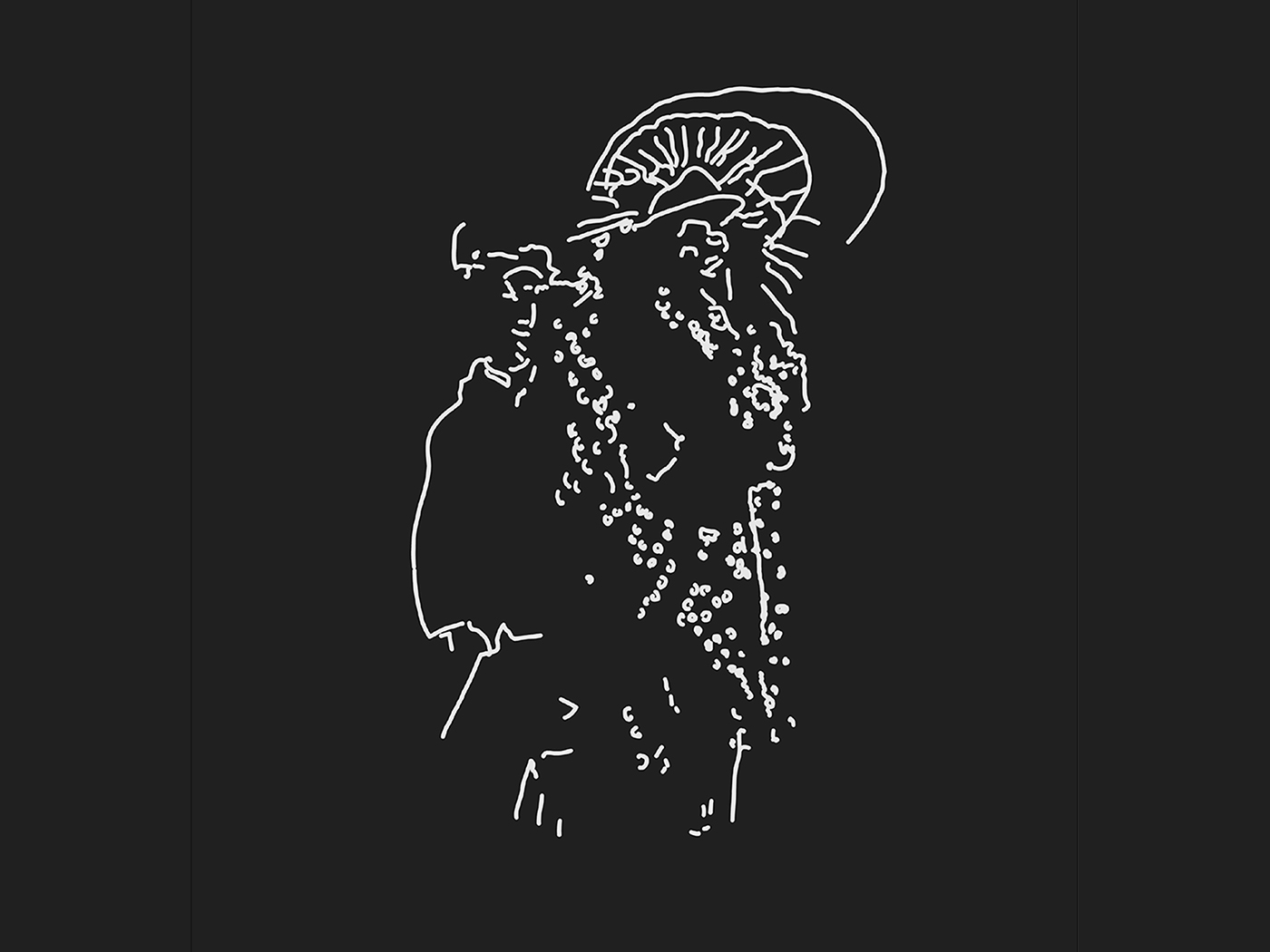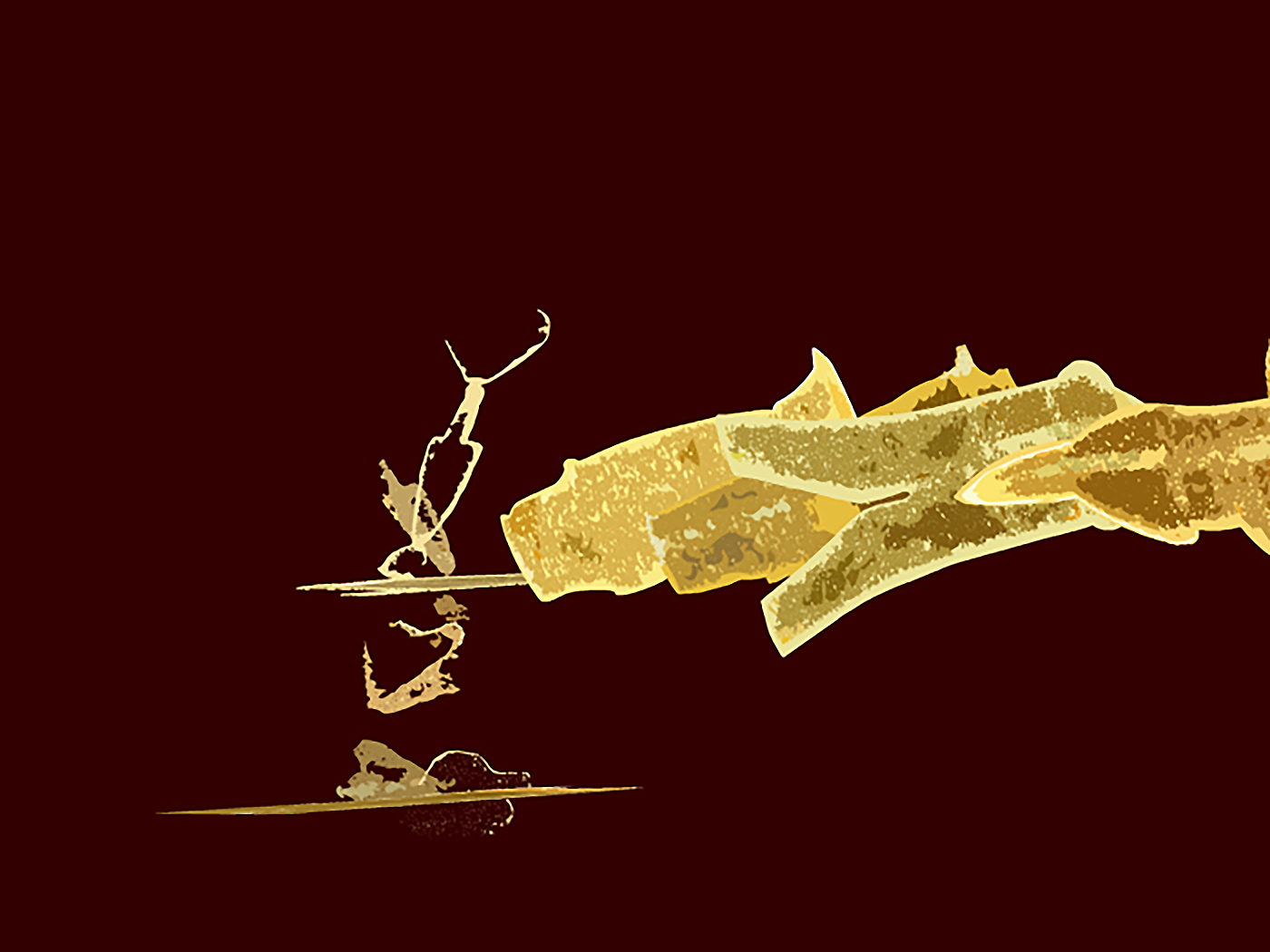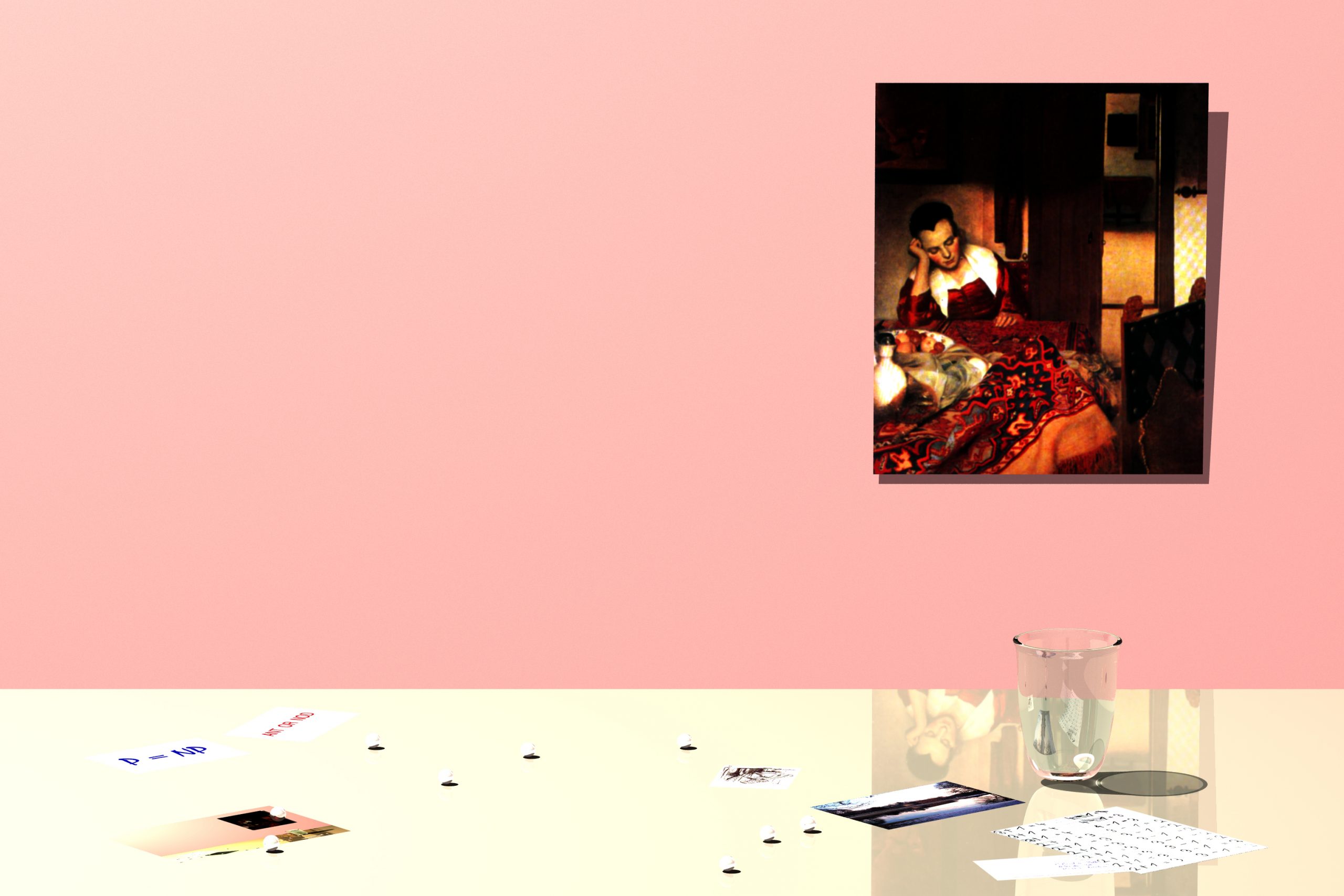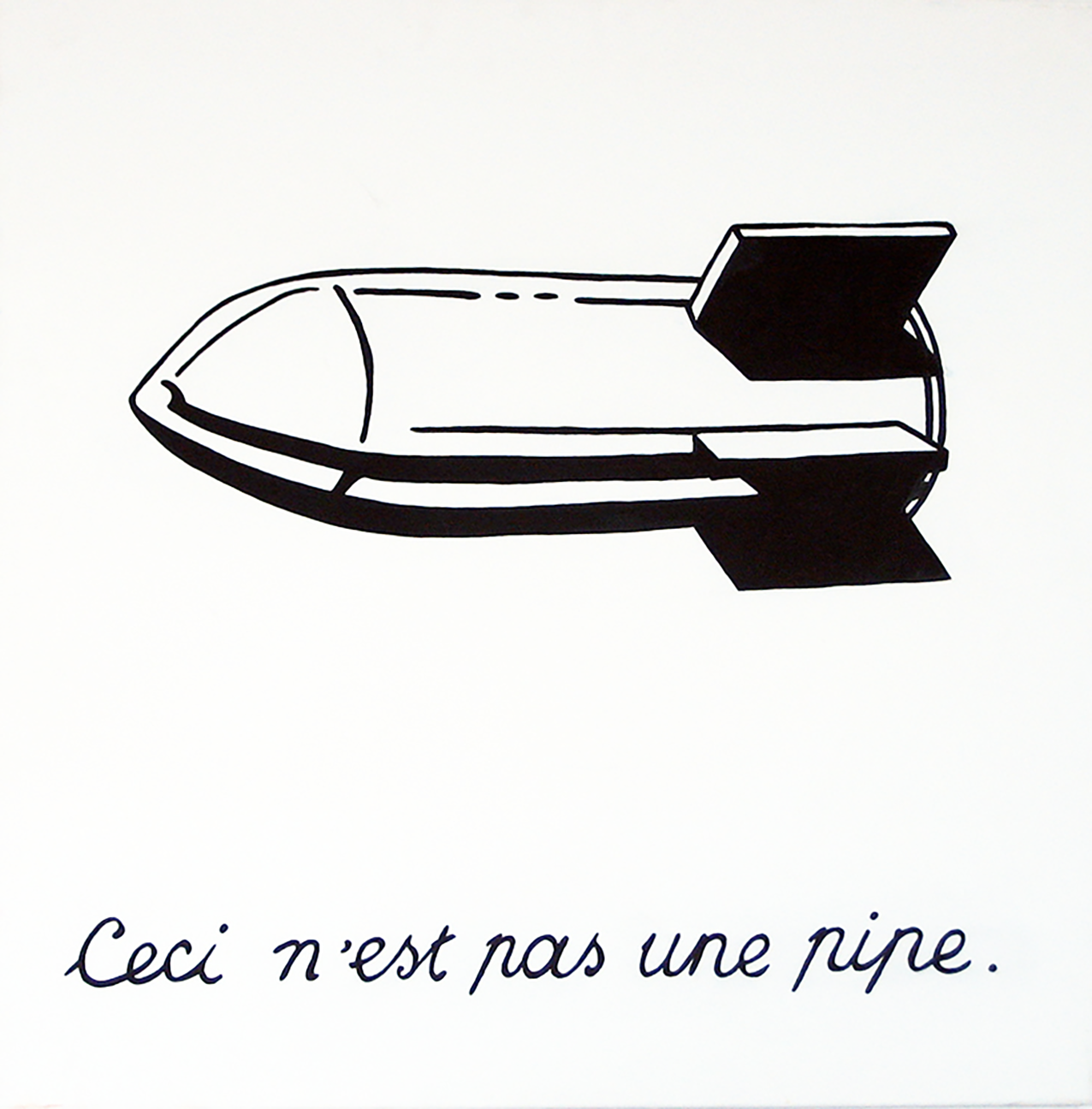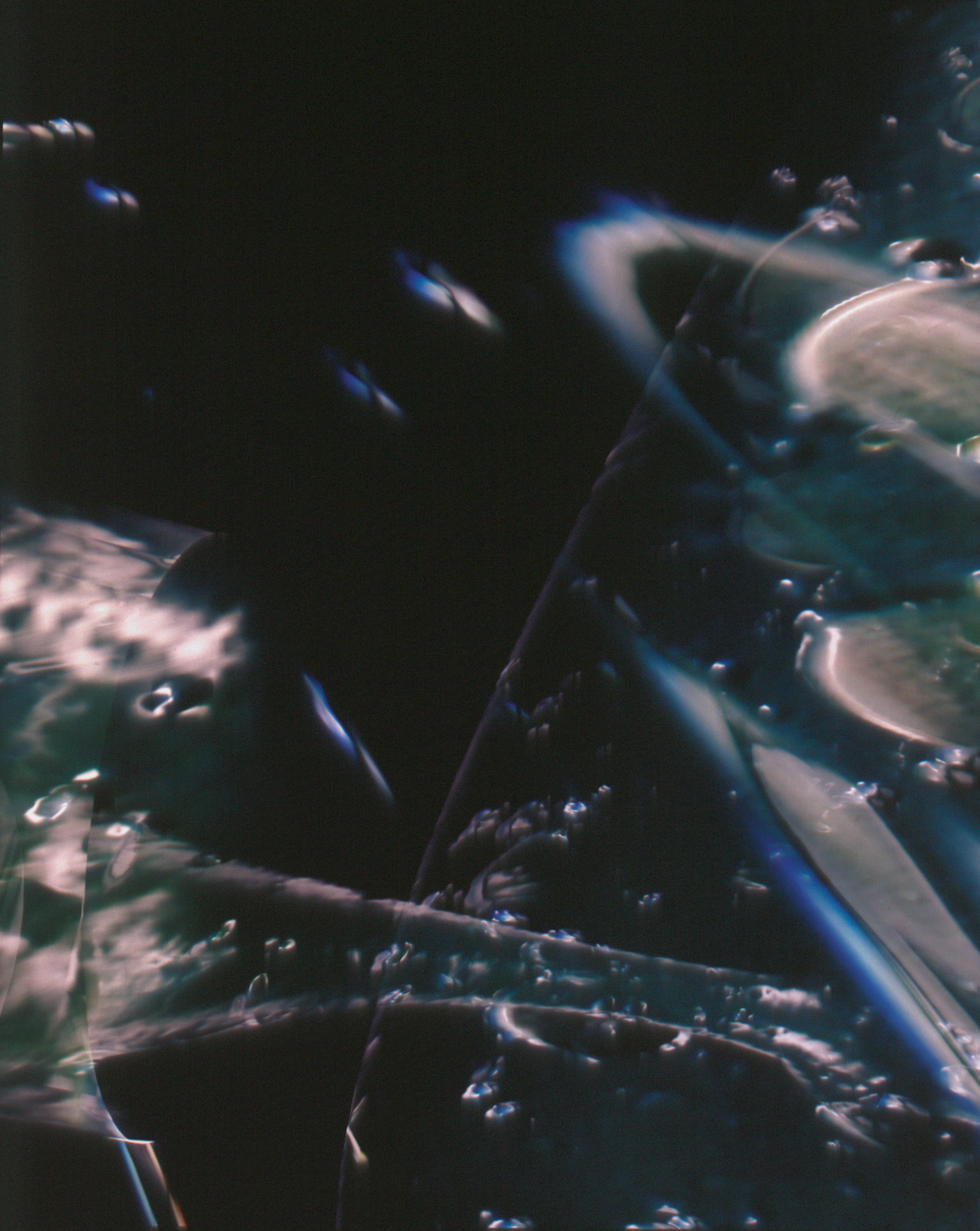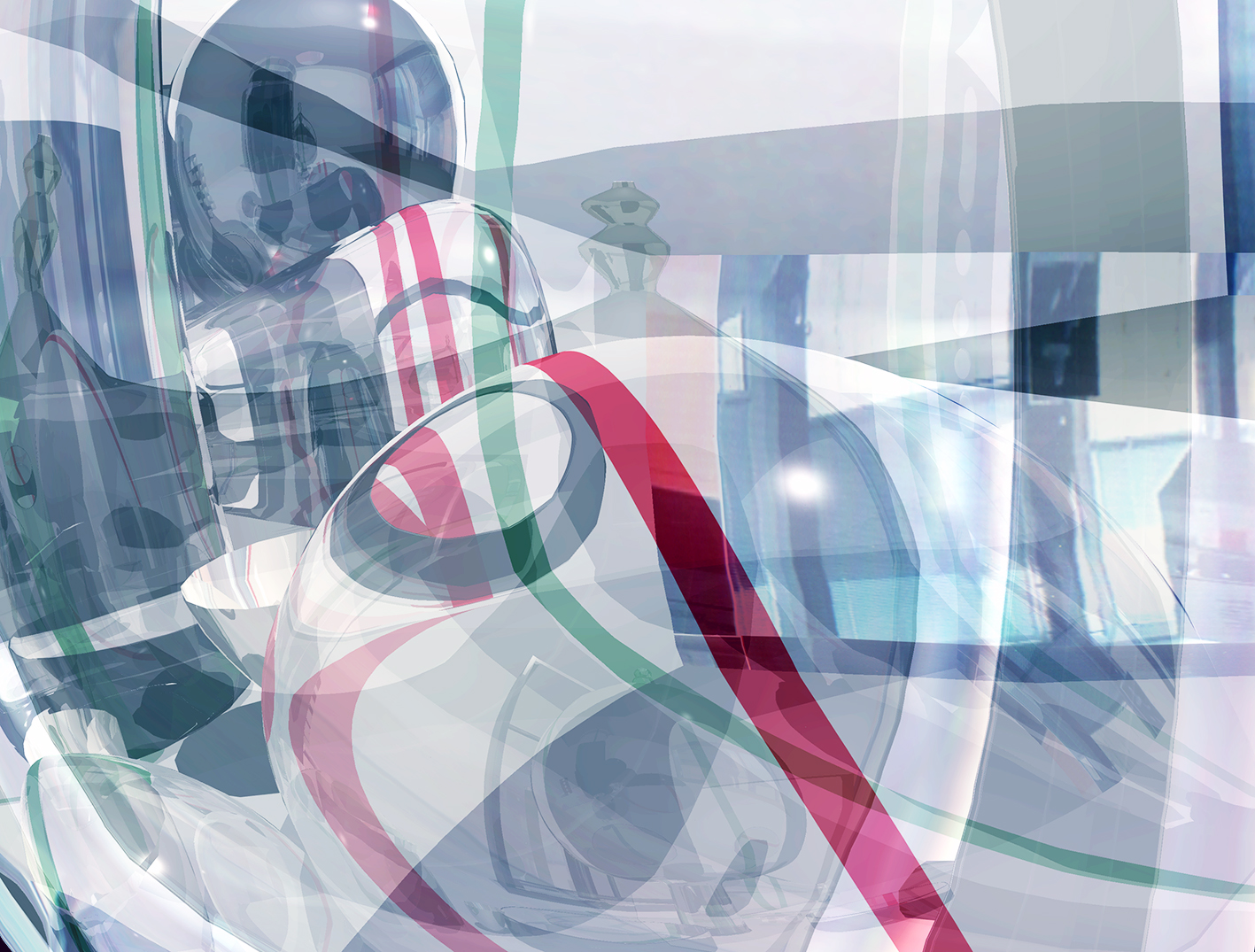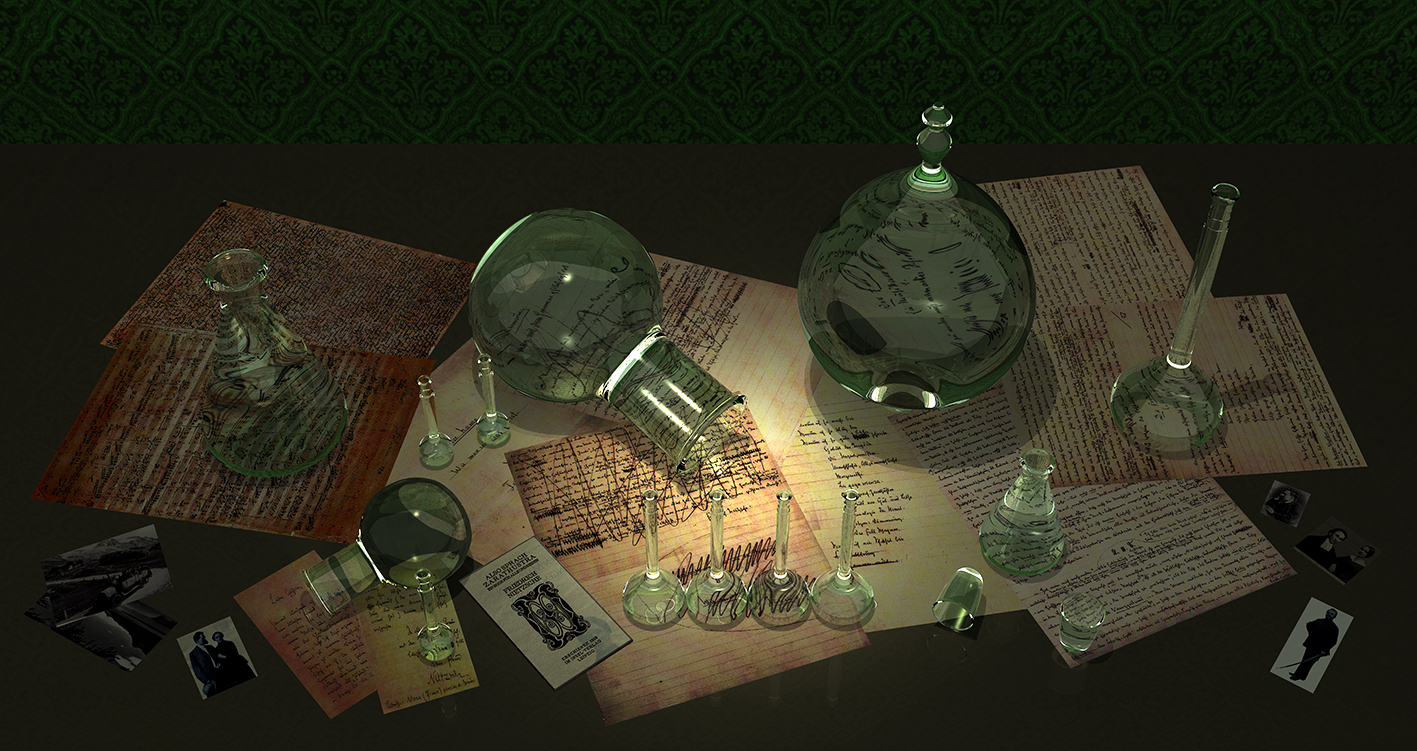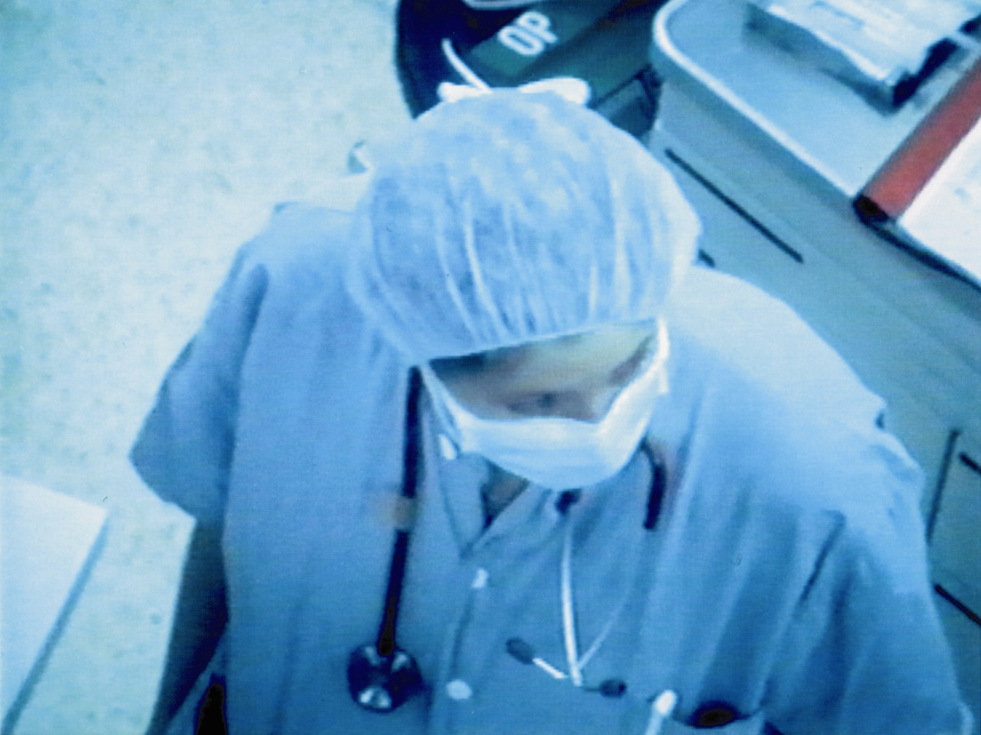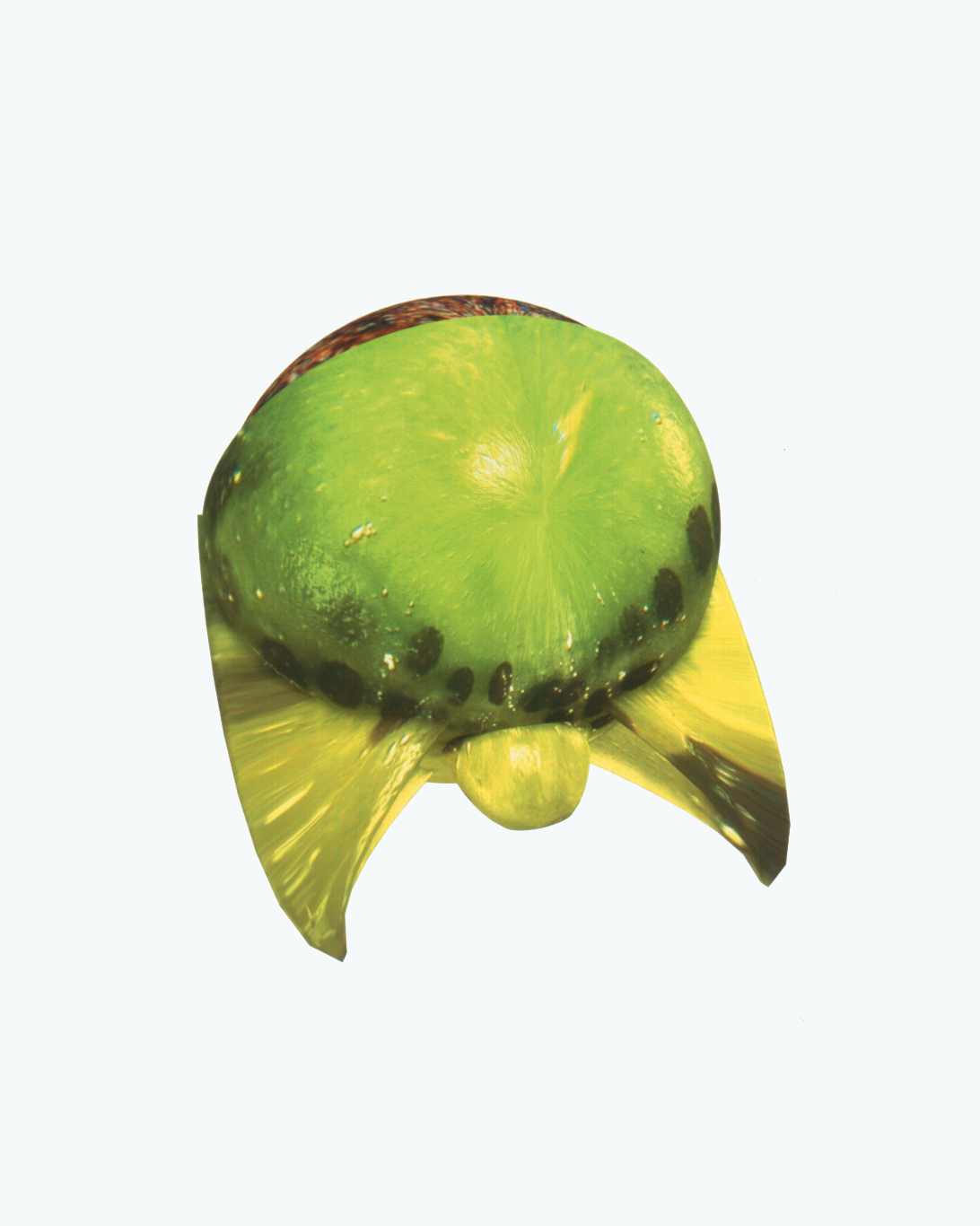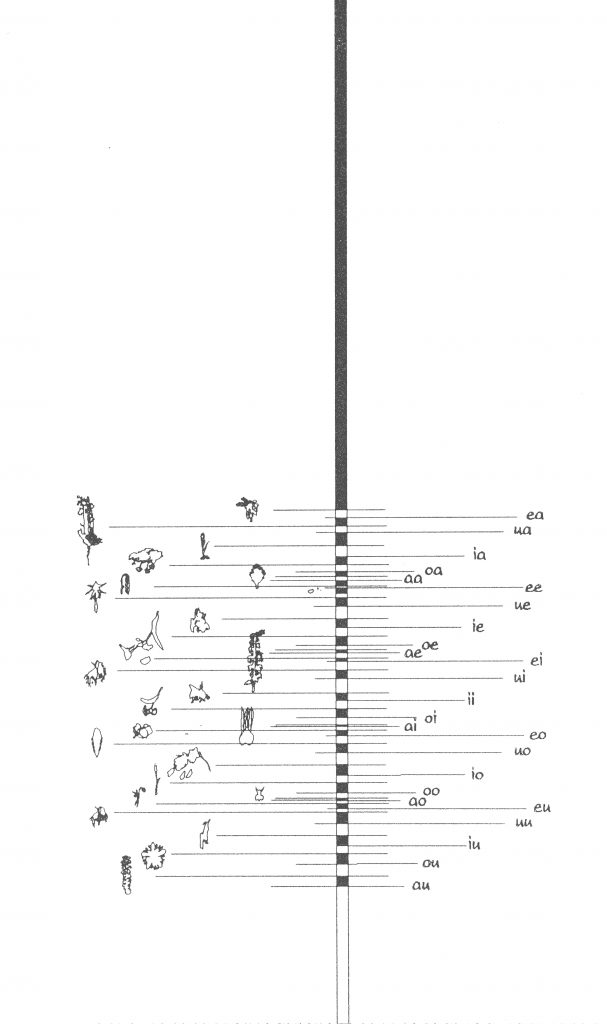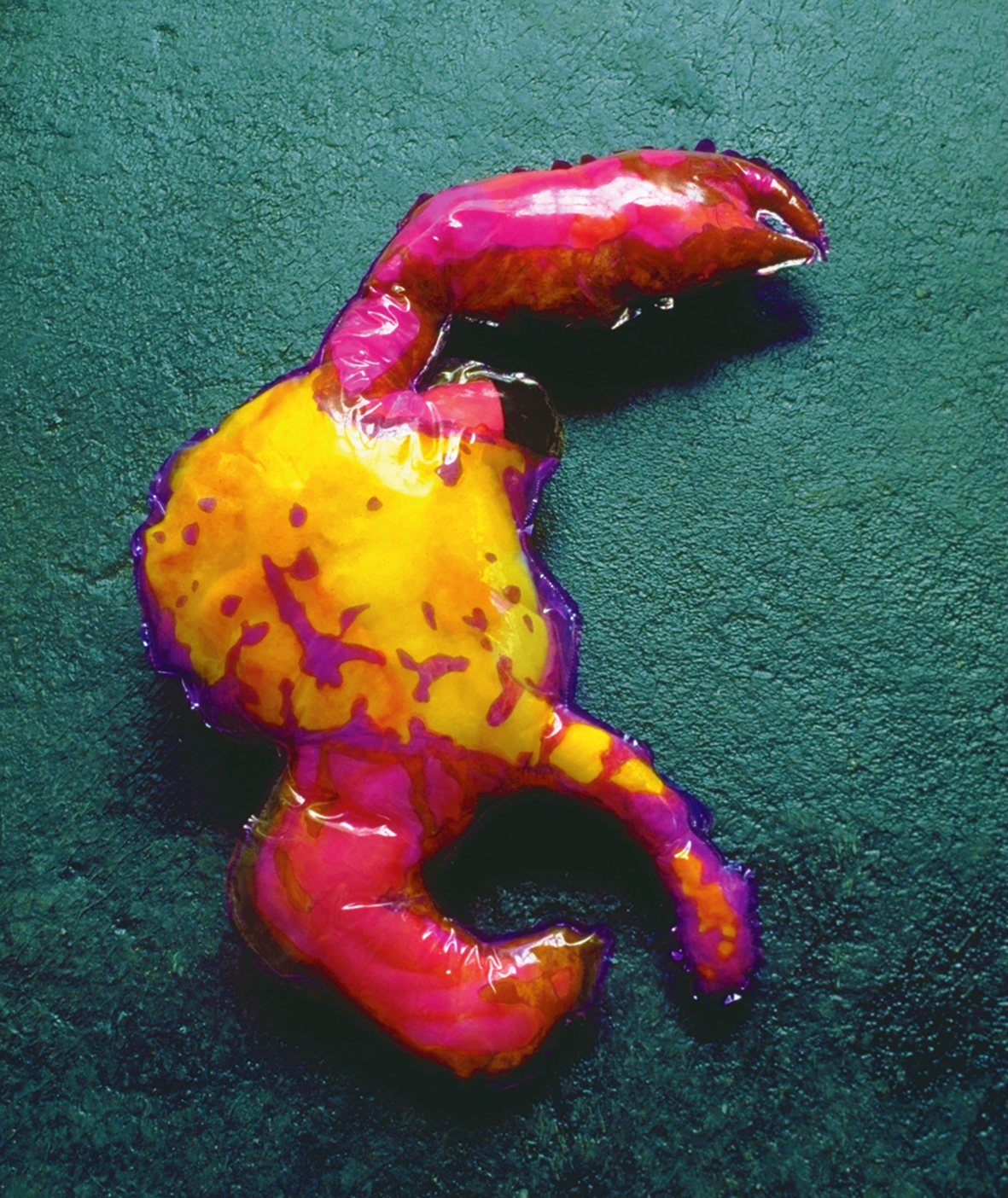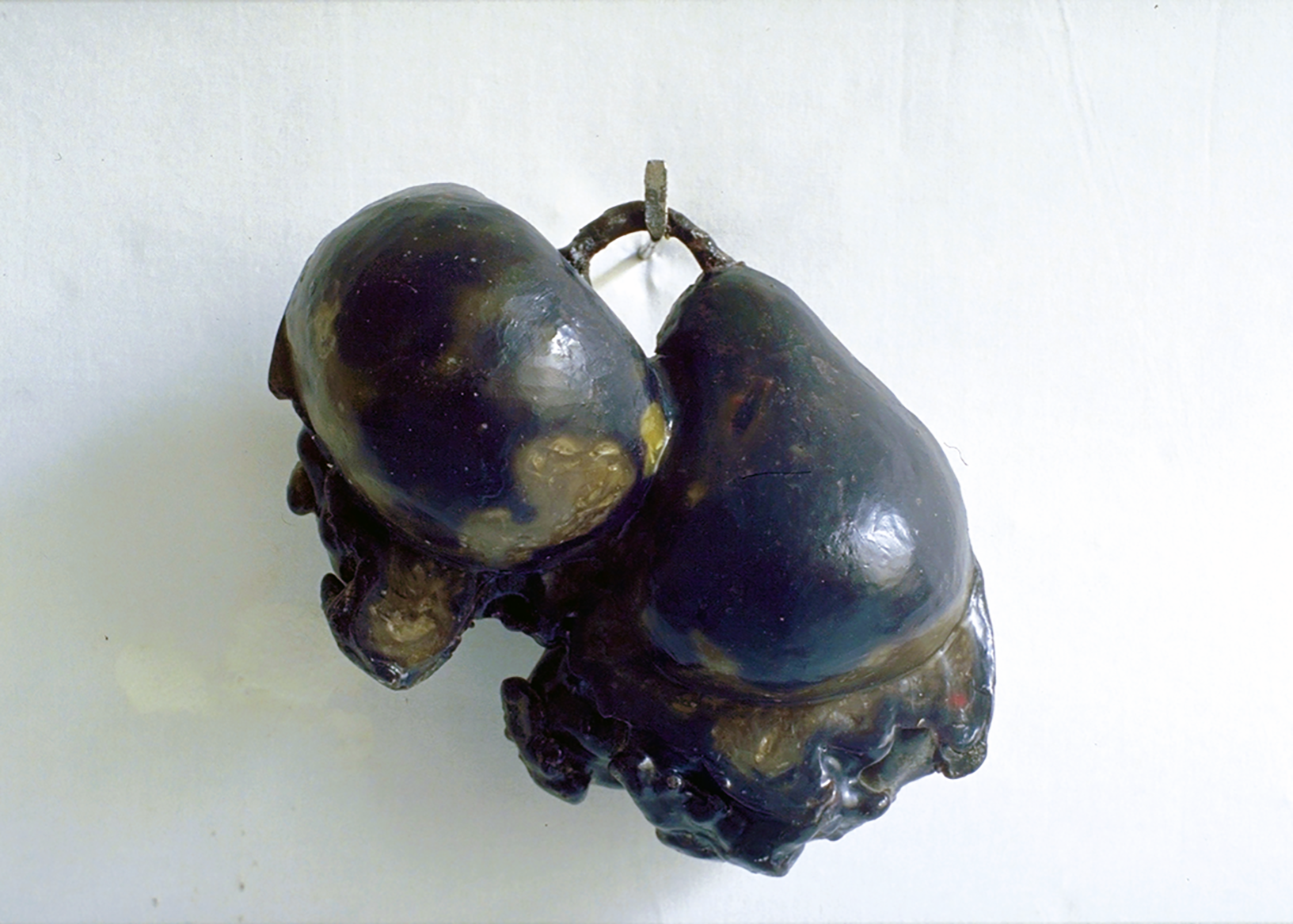Lorem ipsum dolor sit amet, consectetur adipiscing elit. Ut elit tellus, luctus nec ullamcorper mattis, pulvinar dapibus leo.
Please click on project title or image to access detailed information pages.
United by a mutual interest in exploring and unpacking the societal, political, technological, and artistic implications of emerging technologies, we formed a group to collectively create artistic knowledge and share our diverse approaches which will now be presented in SERVICE at Kunstpunkt Berlin in August 2023.
The exhibition presents different perspectives on our socio-technological present, aiming to transcend the surprise of the tool. Through its use, whether subverted or practical, we continue to nourish the sharing of our questions in society through artistic practice.
We investigate and speculate on how AI will be metabolized by humanity – and how in turn AI will metabolize us.
With Yan Chmarau, Mahmoud Ismail, Haemin Jung, Yun Kima, Mano Leyrado, Carolina Ovanda, Isabella Palacios, and Tyyne Claudia Pollmann
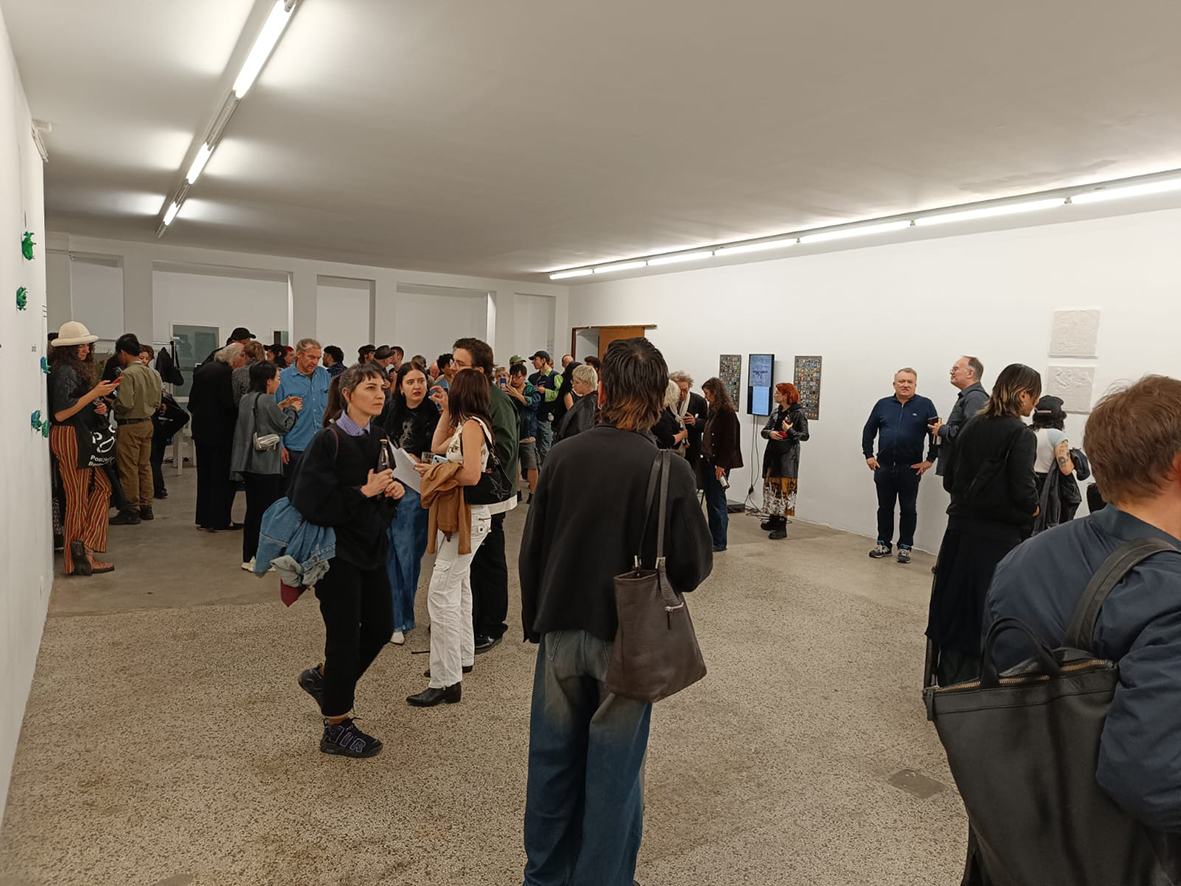
Photo: Aaron Pollmann
HERE.NOW.RAW. presents the AI start-up HERE (HEalth & REsearch), which plans to set up in the former Galeria Kaufhof at Alexanderplatz and pretends to design new alternative futures while aiming to optimize AI generation.
The 10 min. video shows footage from the AI-controlled surveillance cameras of the 3d avatars of the dancers SIM, ULA, and TIO, and the employee SER. Instead of depicting a focus on health and research, the sequences unfold a SIM-ULA-TIOn-Theatre and experimental test laboratory for data extraction.
The following images are landscapish entangled sceneries taken through a digital journey into subterranean settings. They appear to be subsoil or submarine – submergings with unsettling diffraction modes that shake spacial and timlely orientations and perceive becomings, confluences, conglomerations, delutions, delusions, defusions, confusions: cosmo-nautic, embroynic states of pluridentities.
The sceneries are rendered as large images in high resolution to allow for microgenerations which can be detected in close-up investigation. The details reveal contradicting heterotopic microscenes and signs of unknown origin and meaning that are scattered across the formations. (The uploaded images are low resolution copies).
*dedicated to Karen Barad, Rosi Braidotti, Donna Haraway and Bruno Latour
The music video Cyborgs meet AI was initiated by a reenactment of the exhibition WHEN TEKKNO TURNS TO SOUND OF POETRY at the House of World Cultures, March 22.
For this event, the cyborgs which I generated in 1994 made acquaintance with artificial intelligence software. The cyborgs’ image data were converted by AI-software to audio data and image recognition results. The computer has thus become an active participant in the artistic production and opens up a new facet of cyborgism.
This lockdown-project had 3 departments:
Department 1: furniture baroque
Department 2: deconstruct
Department 3: flexible personailty
The term human resources defines employees of a company as human performance potential or human capital.
Human Resources 4.0 is a project with blurred edges, volatile occupations, changing morphologies and teeming anglicisms, entirely in the spirit of Industry 4.0.
With puppet-like protagonists, critical choreographies are created as reenactments of events and current developments, incarnations or political interventions on human resources 4.0 – a term that has already been decimated by half in view of the loss of “human” from “resources”.
The remnants are being administered. They are being optimized, evaluated, flexibilized, isolated, precarized, devalued, uberized or gigged. As gestural frippery, they surround the sites of profit maximization.
Employee with designer stool: furniture baroque.
A transdisciplinary and participative public space work with 3 parts.
Part 1: leave a trace – a permanent, interactive installation
leave a trace records the movement of its users in the atrium of the Charite CorssOver institute CCO, relays them on a screen and stores them in an archive. Every day the institute users create traces and patterns.
A transdisciplinary and participative public space work with 3 parts.
Part 2: trancelation – a set of 9 canvasses for the congress room in CCO institute.
A day that never happened.
A composition of trace patterns from leave a trace in the atrium, down-sized to capture the traces on the screen, is now up-sized to provide fragments of the image on the wall. The long and narrow congress room does not allow for distance, so that the work needs to be walked along, with the effect, that mental memory traces need to be created to fathom the entire work: trancelation.
Trans- (Lat. trans = across, over, beyond), replaced by trance– (Lat. transire = to cross over), which points to a state of advanced consciousness. trancelation sensitizes its recipients to fragmentizing, scaling and translating. Scientific data are extracted from complex live events by applying these methods, causing transmutations. This is alluded to by the title, which is phonetically similar to “translation,” but different in the written language.
A transdisciplinary and participative public space work with 3 parts.
Part 3: tracelation – publication
Retrieving, processing, tracking and tracing have evolved into standard actions performed with any available data, including their instant translation into images, thus transforming, modifying and adjusting them for the visualized results. Data are treated as fragments; aspects, parameters, details of complex actions and behavior, which are isolated, reduced, idealized and finally presented for further investigation. The results apparently show a smooth and direct translatability.
The publication includes essays by Knut Ebeling, Maripaola Gritti, Wolfram Liebermeister, Warren Neidich, Ralf Reulke, Dominik Rueß, Alan N. Shapiro, and Miya Yoshida.
Mind stick 4.0 and the complementary work Enhance me 4.0 refer to the engineering of industry 4.0 and were part of the Entrepreneur Industry 4.0 competition.
The terminology used in brain research is increasingly borrowed from computer technology, while the brain is conceived as hardware, which can be upgraded, expanded, optimized, and modified.
Mind stick 4.0
Shape: Machine screw as typical industrially manufactured part
5 other objects in the screw: DNA double helix oriented at the screw turn, but evolving and partially leaving the machine screw object. Additionally, three veins that grow through the substrate and also sometimes outgrow into the environment.
Surroundings: The object is completely exposed. Ideally presentation between two glass plates similar to a slide with cover slips in microscopy. Thus suspended in space, the screw can visually overlap and connect with the viewer. The object needs a certain size so that the cell structures can become visible.
Substance: Agar – Agar = typical red, gelatinous culture medium for growing cultures in microbiological laboratories.
Summary: Mind stick 4.0 is an image that refers to future achievements in the field of mental engineering. The stick in the shape of a screw suggests easy application, the object appears appetizing and unpleasant at the same time and creates ambivalent feelings.
Ms bachelor machinist
– (Die Junggesellenmaschinistin)
edition & interactive presentation
The editions consists of a green box, a double-sided print of 1 of the 9 bachelors, and the fig. No 10 closed circuit.
Fig 10, closed circiut, is the foundation of a game Ms bachelor machinist. It contains interactive buttons (the shooting holes) for calling up the bachelors, which produce their specific sounds. You can create your individual chorus of vicarious agents that way.
This audio lecture mental mappings introduced the symposium for brain research ath the ZKM (Zentrum für Kunst und Medien) Karlsruhe in 2005.
It is held in German and comprises three model for perception that were researched and questioned in artistic productions.
The artistic projects are:
translate 2020
the one and the many
mental mappings
mental mappings is an animation installation which refers to Duchamp’s Large Glass, The bride stripped naked by her bachelors, even, described by Serge Stauffer as a peep-show for intellectuals, with its two gendered parts, female above (now opposite) – male below (now deposit).
In mental mappings, both animations play out vis-a-vis to each other and both include sound. The previously female-defined half, now opposite, consists of six images crea(ted as drawings, moving at extremely slow speed, and gradually morphing into each other – male-female – two identities-one identity as a loop, accompanied by yodel with accordion. The protagonists are family members of Albert Einstein (Grandpa, grandma, father, mother, 2 children, Albert) disintegrating as soon as they take on shape, transforming into one another.
The previously male-defined half, now deposit, consists of a play with 9 protagonists from the “graveyard of uniforms and livres’” (Drawing by Duchamp), defining job descriptions of dependent workers. They are trying to replace each other and finally come to death and are pushed aside by the pall bearer: a noisy and stiff narration of introductions, replacements and degenerations.
The simultaneously performed projections demand a constantly alternating viewer positioning while it creates a permanent exclusion of information with a perpetual auditive intermingling of information sources. The acoustic components provide a constant reminder of the excluded projection: sounds and yodel punctuate the scenes.
the one and the many is a series dedicated to Kurt Gödel.
A tableau with a water glass and notes by Kurt Gödel: arithmetic problems of the 6-year-old, the envelope of a mathematician, Alice in Wonderland, a photo of Princeton, the one and the many – 3pm – as a postcard, the formula NP=P, ANT OR NOD, on the wall a painting (Vermeer’s maid, asleep at the table) and, depending on the time of day, a respectiveb number of beads scattered on the table surface.
other ones includs the production of various signs and drawings on canvas for Giuseppe Peano, George Boole, Marcel Broodhaers, and Rene Magritte and led to the subpprojects 1 and 1 and 1 and stop counting, both trans-disciplinary projects of artistic research.
Like the other two projects, other ones revolves around the axioms and history of number theory, logic, and set theory, from George Boole to contemporary theorists. These areas play a key role in the theory of science. The conventional representation of knowledge content in the “hard” sciences is essentially reduced to the transportation of data and (preliminary) facts, while the generative effect of knowledge production and the development and of theories remain rudimentary.
The viborg is a continuation of the cyborgs: a virtual-ventricle-b-organ. Ventricles actually exist in the human brain, the four brain ventricles. They are the cavities in the brain filled with liquor cerebrospinalis. I simulated them on the computer and thus chose the places where no logical thinking takes place.
I first simulated the ventricles as three-dimensional spaces on the computer and then projected the real material onto the body: a photo of the meeting of oil and water. I went in with a virtual camera and performed tracking shots from the voyage through the ventricles. But, as the vertricles are a place hwere no thinking takes place, I gave the computer contradictory parameters for the image generation, so that the results of the images were unpredictable for me. I got into the era of errors and realized that there are interesting and uninteresting errors.
The project translate2020 consists of an artistic production preceded by conversations with scientists as an initializing factor, which revolved around the parameters for creating scientific models and their translatability into different disciplines. From the initially scientific, computer-technological and -critical approaches, questions with visibly sociological and political contents arise. From a conceptually defined work structure, a questioning of the structures underlying an artistic activity develops.
translate 2020 was initiated by conversations with computer and media scientists. The conversation with Prof. Joseph Weizenbaum subsequently inspired for 9 cm, a series of experimental images and an animation. A contact point between science and art is their concern with creating models of reality. “(…) What they [the human beings] face is their own model of a universe and, since they are a part in it, also their own model which they create of themselves.” (Joseph Weizenbaum The Power of the Computer and the Powerlessness of Reason)
Prof. Josef Weizenbaum and Tyyne Claudia Pollmann,
Berlin 2000, for translate 2020
Prof. Peter Weibel and Tyyne Claudia Pollmann,
Karlsruhe 2000, for translate 2020
dreamachine is dedicated to Ada Lovelace. The work consists of an installation (laboratory table with 45 glass containers), various simulations and an animation. For the simulations I built a laboratory with table, window, open door, workstation from molecular biology, ceiling, floor, walls, light sources and camera (viewer’s point of view). Ada Lovelace is present in the scene – as a still from the film: “Ada” by Lyn Hershman Leeson – and is located to the left of the door. The floor features the Ada check.
“I am not walking around with a snail shell, but with a molecular biology laboratory.”
(Ada Lovelace, Nov. 1844)
“And how could we explain! We operate with nothing but things that do not exist, with lines, surfaces, bodies, atoms, divisible numbers, divisible spaces – how should explanation be possible if we first translate everything into a picture, into our picture.” (aphorism 112, Fröhliche Wissenschaften, Nietzsche)
Abelson murine leukemia virus Acidaminococcus fermentans Acinetobacter anitratus Acinetobacter calcoaceticus Acinetobacter lwoffii Actinobacillus actinomycetem comitans Actinomyces israelii Adeno-Virus Gruppe A-E Ancylostoma duodenale Ascaris lumbricoides Avian erythroblastosis virus Avian myeloblastosis virus Bacillus anthracis Bacillus cereus Bacillus stearothermophilus Bacillus subtilis Bacteroides fragilis Bacteroides asaccharolyticus Achromycin Aciclovir Aerugipen Albiotic Amantadin Ambacamp Ambilhar Amikacin Ampicillin Amphotericin B Ancotil Ampho-Moronal Aloxyn Amblosin Amoxicillin Amoxillat Amoxi-Wolff Amoxypen Antimyk Apalcillin Apatef Arcasin Arilin Aristamid Augmantan Azlocillin Aztreonam Azactam Azidocillin Azidothymidin Azithromycin Azudoxat Bacampcilin Barazan Baycillin Baypen Batrafen Betabactyl Bifonazol Biklin Bidocef Bilarcil
The cyborgs refer to Donna Haraway’s Cyborg manifesto and Marcel Duchamp’s Large Glass: The bride, stripped bare by her bachelors, even.
The bachelors from the lower part of the glass were stripped off their uniforms, revealing the pink gas which Duchamp mentioned they would be filled with. I called my 3-d simulation accordingly: The bachelors, stripped bare by their bride, even.
The cyborgs assert their existence despite their heterotopic as well as heterochronous ambivalence that can be perceived from diverse perspectives and scenarios.
work in progress
Note on Scale, heterodox (Maßstab, heterodox)
The sections of the measures are from the relations of two interlocking fields. In the left field contains 25 contours, on the right field there are 25 diphtongs. The first vowels of the diphtongs, unlike the second ones, are not arranged in their conventional order. They no longer refer to the delimited field of a defining language, but to the vowels common to all languages, which, defined as feminine, voiceless, are “thought of” in different language regions, stand “between the lines” and represent the meaning-giving links between the voiced (male) consonants.
On the left side, contours of life forms are positioned. The signified offsets against the determiner; and the horizontal divisions of the scale sections are given ridges that extend into the opposite regions of the signified and determiner. The alternating black and white sections are formed by the ridges crossing the scale and reaching into the opposite field; ridges emanating from the contours end at the same length in the field of determination without encountering a determiner, while ridges emanating from the diphthongs reach different distances into the field of contours (and are staggered in length according to their initial vowel).
The central scale thus formed, which runs black above the markings and white below, acquires discontinuous sections because of the cross-references generated by the ridges.
It has arisen from the opening of the reference between the designated and the determinant; determination now no longer appears distinct and the entities outlined by contours stand in a free space regarding their assignment.
The scale thus ends the seemingly unambiguous fixation of the designated and the determining. It stands as an indicator for a changed relationship of value formation and works towards the abandonment of a fixed system.
The entities defined by means of the scale are freed from external determinations and fixations, develop their scale independently and refer to the possibility of a changed conception.
Tyyne Claudia Pollmann, 1993, first computer generated work
work in progress
work in progress
